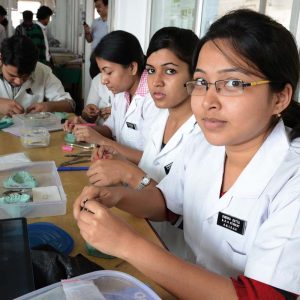Gender, Skill and Employability in India
Published: Oct 31, 2017
Published: Oct 31, 2017

Photo: Prasad
Prospective dentists in a science and research hospital in Kolkata, engaged in lab work. According to the 2011-12 NSSO reports about 11 per cent of women received training in health and paramedical services, in comparison to 4 per cent men.
Keep reading with one of these options :
